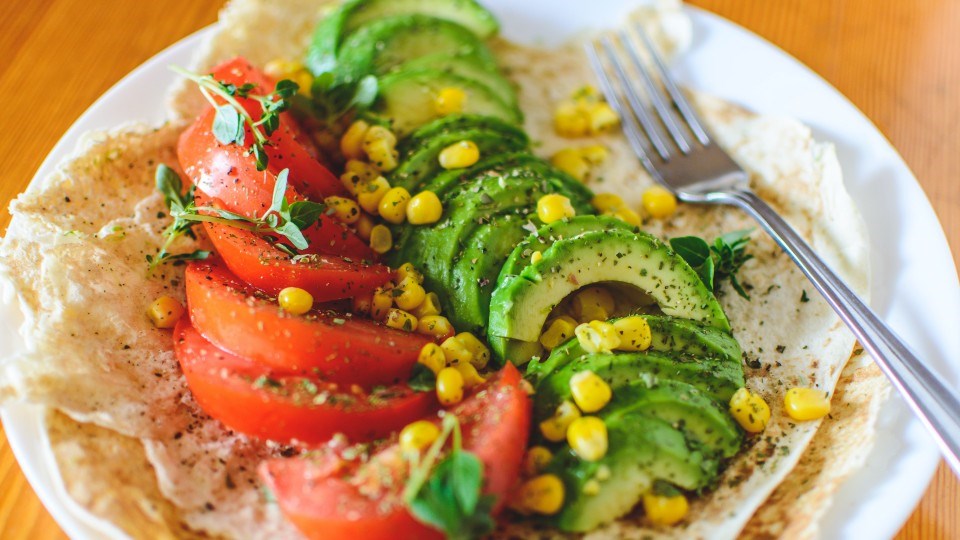Plant-based eating. Whether that means veganism, vegetarianism, Michael Pollan’s “Eat food. Not too much. Mostly plants,” or even trying to work with meatless Mondays, it is a health and wellness phrase that is becoming ever-present.
Exponentially so when you add the environmental factor; our diets, as they currently exist, are not considered sustainable – there is not enough land to operate as we currently are, without even looking at the effects of climate change.
Research continues to pour in, and though debates are back and forth as to which extreme is best, results are initially showing that in many cases a combination of both vegetarianism and meat-friendly may be the best way forward.
But for many, that still means eating significantly less animal products than they currently are – and for some, that change can seem insurmountable. But with a focus on making changes that are sustainable to your lifestyle, as well as the environment and your health, you can find the best of both worlds, and a future for this one.
One of the keys to making any diet changes is to do so gradually, said Paula Ross, a registered dietician at HeadWay clinic in Sudbury.
“This may include starting by making one of your meals meatless each week,” she said. “If you find that you are able to do that confidently then try to aim for two or three meatless meals per week, and go from there.”
She also recommends having a little fun with new ideas. “Experiment with different recipes and preparation methods to help you find ones that you enjoy and offer your diet some variety.”
Of course, ask anyone who has chosen to eat a vegan or vegetarian diet what question they’re most often asked, their answer will be: ‘But where do you get your protein?’ The answer is simple, and it’s easier than with other nutrients.
“Excellent plant sources of protein are legumes, which include lentils, dried peas and beans, soy and soy products like edamame or tofu, whole grains like quinoa or buckwheat, and nuts and seeds like almonds, walnuts, cashews and flax seeds,” said Ross.
However, there are some nutrients that will be tougher to get as you lessen or eliminate meat from your diet. “Individuals who choose to follow a vegetarian eating pattern need to mindful that they plan their meals well so they get adequate amounts of protein, iron, vitamin B12, vitamin D, calcium, omega 3 and zinc, so planning meals and snacks are very important.”
Because of this, many feel the need to rely on meatless convenience foods, which can sometimes even make your attempts at healthy eating worse than your previous diet. Ross advises eating a variety of foods from Canada’s Food Guide, as well as paying special attention to the following.
Iron: “Vegetarians need about twice the amount of iron as non-vegetarians because the iron in plant foods isn’t absorbed as well as the iron found in animal foods. One of the things that vegetarians can do to help maximize the amount of iron they absorb from their plant foods is to eat foods high in vitamin C at every meal. Some examples could include adding orange slices to your leafy green salad or adding broccoli and red peppers to your tofu stir-fry.”
Vitamins: “B12 is only found in animal and fortified foods. Similarly, vitamin D is primarily found in fish, eggs and fortified foods. People who avoid all animal products should include fortified products like soy beverages to ensure they meet their vitamin B12 and vitamin D needs.”
Calcium: “Including lots of dark leafy greens such as Swiss chard, collards, kale and spinach will help to ensure that you get sufficient amounts of calcium.”
Omega 3: “Omega 3 is found in fatty fishes like salmon, trout, and sardines, but if you don’t include fish in your vegetarian eating pattern other sources include ground flax seed, walnuts, and some fortified products such as orange juice and some soy beverages.”
Zinc: “Sources include grain products, nuts and seeds, legumes, and soy products.”
Luckily, you can also find help from your community. The Northern Vegetarian Society can offer support, and even a few new and interesting recipes to add to your repertoire. Speaking to others on the same journey is a great way to learn more, and perhaps crack a few life hacks along the way.
As well, Ross offers this advice: “The secret to making the changes stick is to make small realistic changes that are sustainable. This will allow you to build upon each small success and keep you motivated to keep working towards your goal.”
So while plant-based eating – that is, ensuring the majority of the food you consume is from plants – can feel like an overwhelming idea, and something that requires you to abandon all the things you love, even making small changes can really help your health, and the sustainability of food production. You may never become a vegan or vegetarian, but adopting more than a few meatless meals a week will make a difference.
Coping explores ways we try to stay healthy and manage the challenges of life. It is made possible by our Community Leaders Program.
